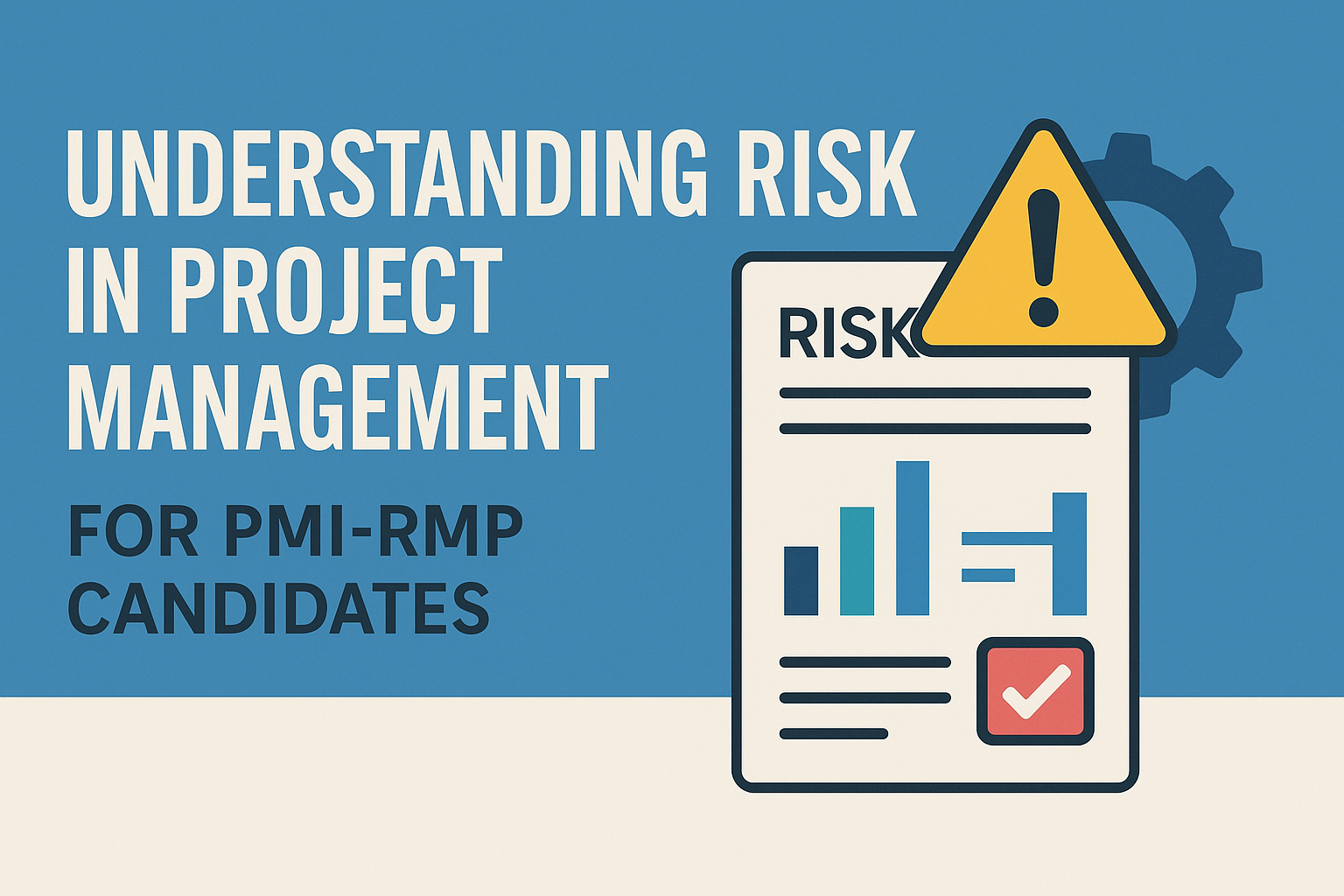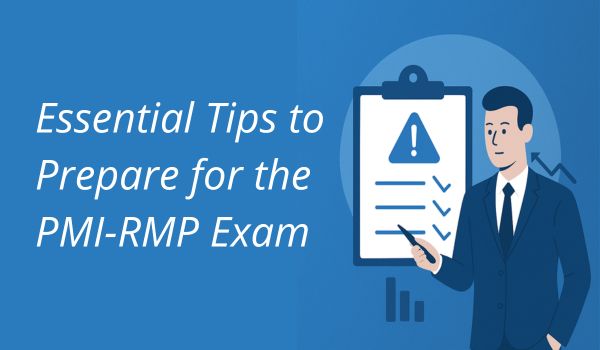Introduction: The Strategic Role of Risk in Project Management
In today’s dynamic and uncertain project environments, risk management has become a cornerstone of successful project execution. For professionals pursuing the PMI-RMP® (Risk Management Professional) certification, understanding the core concepts and application of risk management is essential. Risk is not just about avoiding threats it’s also about identifying and exploiting opportunities that can drive project success.
This article offers an in-depth look into the concept of risk in project management, its relevance for PMI-RMP candidates, and how mastering risk principles enhances both project outcomes and professional credibility.
What is Risk in Project Management?
Risk in project management refers to an uncertain event or condition that, if it occurs, may have a positive or negative effect on project objectives such as scope, schedule, cost, and quality. Risks are not always threats. They can also be opportunities—positive risks that, if managed well, can benefit the project significantly.
Why Risk Management Matters for PMI-RMP Candidates
PMI-RMP® candidates are expected to demonstrate deep expertise in identifying, analyzing, responding to, and monitoring risks. Risk management is not a standalone activity—it’s embedded in all project management processes and influences decision-making at every level.
Benefits of mastering risk management:
- Proactive decision-making
- Increased stakeholder confidence
- Improved resource allocation
- Higher chances of project success
The Five Risk Management Domains (PMI-RMP® Framework)
The PMI-RMP® exam content is structured around five key domains. Understanding these domains is critical for both the exam and real-world application.
1. Risk Strategy and Planning
Focus: Defining how risk management will be conducted for the project.
Key Tasks:
- Develop a risk management plan.
- Determine risk thresholds and tolerance levels.
- Align risk strategies with organizational objectives.
2. Stakeholder Engagement
Focus: Identifying and engaging stakeholders in risk-related activities.
Key Tasks:
- Communicate risk responsibilities and expectations.
- Gain stakeholder support for risk decisions.
- Involve stakeholders in risk identification and response planning.
3. Risk Process Facilitation
Focus: Leading and facilitating risk management processes.
Key Tasks:
- Support risk identification sessions.
- Guide risk analysis and prioritization.
- Facilitate risk response planning and implementation.
4. Risk Monitoring and Reporting
Focus: Tracking risk status and communicating updates.
Key Tasks:
- Monitor risk triggers and responses.
- Update risk register and risk reports.
- Recommend risk-related changes as needed.
5. Perform Specialized Risk Analyses
Focus: Using advanced quantitative and qualitative tools.
Key Tools:
- Monte Carlo Simulation
- Sensitivity Analysis
- Decision Tree Analysis
- Expected Monetary Value (EMV)
Types of Risks in Projects
Understanding the types of risks is crucial for effective analysis:
- Internal Risks: Resource limitations, technology failures, budget overruns.
- External Risks: Market changes, regulatory updates, environmental issues.
- Technical Risks: Design flaws, integration failures.
- Operational Risks: Supply chain disruptions, process inefficiencies.
- Strategic Risks: Misalignment with business goals or stakeholder expectations.
Risk Management Process (Based on PMBOK® Guide)
- Plan Risk Management
Defines how risk activities will be conducted. - Identify Risks
Techniques include brainstorming, checklists, interviews, SWOT analysis. - Perform Qualitative Risk Analysis
Prioritize risks based on probability and impact. - Perform Quantitative Risk Analysis
Analyze numerically using modeling techniques. - Plan Risk Responses
Develop strategies for threats (avoid, mitigate, transfer) and opportunities (exploit, enhance, share). - Implement Risk Responses
Ensure response strategies are executed. - Monitor Risks
Continual review of risk performance and emerging risks.
Tools and Techniques for PMI-RMP Candidates
- Risk Register
- Probability and Impact Matrix
- Risk Breakdown Structure (RBS)
- Root Cause Analysis
- Delphi Technique
- Sensitivity Analysis
- Simulations (Monte Carlo)
Common Mistakes in Risk Management
- Treating risk management as a one-time event
- Failing to involve key stakeholders
- Overlooking positive risks
- Poor documentation and reporting
- Underestimating low-probability, high-impact risks
Avoiding these pitfalls is key to becoming a successful PMI-RMP.
How to Prepare for the PMI-RMP® Certification
- Study the PMBOK® Guide and PMI-RMP Exam Content Outline
- Understand real-world application of risk tools
- Take mock tests and join study groups
- Attend a PMI-RMP® certification training
- Practice risk scenario-based questions
Understanding risk in project management is not just a certification requirement—it’s a critical skill for driving project success in today’s uncertain world. For PMI-RMP® aspirants, building a solid foundation in risk concepts, strategies, tools, and techniques is essential to becoming a recognized risk management professional.
By mastering risk management, you not only boost your PMI-RMP® exam performance but also elevate your ability to lead complex projects with confidence and foresight.





Leave a Reply